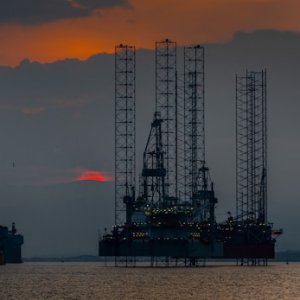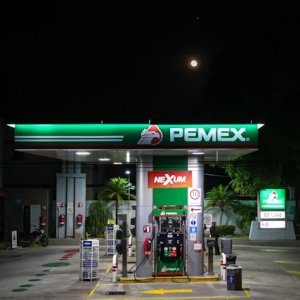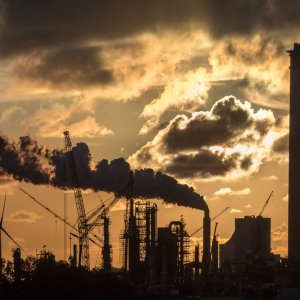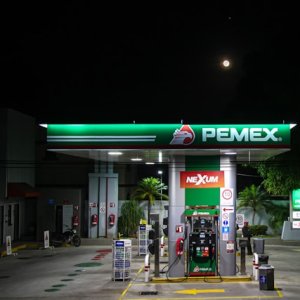Turbulent Times in the Mexican Energy Sector

STORY INLINE POST
We certainly are in a turbulent environment in the energy sector in Mexico. The combination of several circumstances and decisions are not adding the level of confidence needed for optimal decision-making and especially for long-term investment and a better visibility for new opportunities. We also have a growing gap between Mexico’s energy direction compared with other regions, considering the energy transition. There is still a great deal of potential in the Mexican oil and gas industry but the transition clock is ticking and will not wait for us.
The Gulf of Mexico has been among the most explored regions in recent years. With enough potential to continue contributing reserves, even as the energy transition becomes a reality and renewable energy continues to expand as it becomes increasingly cost efficient, the oil and gas industry still has a market to supply in the present and for the next couple of decades. The size of the market is also large enough to make the investment worth it, provided, of course, that efficiency continues to be the focus for wise decisions and that ESG remains a key part of present and future decisions.
I was talking recently with someone who was very enthusiastic about renewables and that oil eventually will be replaced as a main energy source. Yes, the progress is rapid. Every day, we learn about an innovation that provides promising solutions. Still, the transition will be gradual and the oil and gas market will find its right size and shape. I’m not going to get into a discussion about climate change because we will still need oil and gas to be part of a more robust energy mix to 2050 and beyond. Instead, I will focus on some relevant elements in Mexico’s market.
PEMEX
PEMEX will remain the main factor for the near future in terms of production. Based on its last quarterly results, we know that PEMEX somehow has managed to stabilize and slightly increase production, even achieving a profit in the last quarter. In some sense, the prioritization of strategic fields in shallow waters has been key for achieving this result but there are still significant challenges ahead that could have an impact on the overall situation of the oil and gas sector, among others:
- Its financials, as we know, are not quite encouraging regarding payment capacity and sustainable cash flow generation. Even with the effort to bring payments to the supply chain up to speed, there is still a significant overdue balance. The federal government has been clear about its financial support for key projects (refineries refurbishment, the new Dos Bocas refinery) but everything has a limit. Eventually, federal support will have to be contained so as not to diminish the country’s investment grade, which can be dragged down by lower grade for PEMEX.
- New Finance Minister Rogelio Ramirez de la O is widely known in business and financial circles and some debt restructuring is expected, potentially a long-term bond to refinance short and midterm expiration of the current debt. This would provide some breathing room and allow a refocus of investment into those areas that have been left behind. The exposure to accidents or critical events is increasing daily, given the physical condition of some infrastructure, especially offshore.
- As well, PEMEX needs to divert its nonprofitable business lines and rethink its relationship with the private sector. There is no way, at least with its actual financials, that PEMEX can handle more work, especially if we talk about operating beyond the usual shallow waters where its main expertise is based, as is the case of Zama. In line with this, PEMEX needs to think harder about essential and structural changes, prioritizing efficiency and expediting decision-making processes and even lighter overheads.
- Business decisions that are based on an ideological/political mindset, such as getting PEMEX into domestic gas distribution to try to bring prices down instead of seeking a public policy solution that provides a better balance in the market and enforcing more favorable regulations to promote competition, only add to PEMEX’s challenges and increase its risk of failure.
Zama
This block awarded to a consortium led by Talos during the Energy Reform is probably the most important field in terms of exploration success. Potential reserves could be in the range of 670-1,010 MMBOE and it is the most relevant discovery made by someone other than PEMEX in Mexico. The Energy Ministry has chosen PEMEX as the operator of the shared block. This has triggered important concerns in the industry because, in essence, this decision could harm the investment certainty required for long-term decisions. There is a great deal yet to unfold as clearly the operator and Energy Ministry have opposite positions, and this is going to take time and eventually will go to international arbitration. In the meantime, foreign investors and operators will take a more cautious and conservative stance when deciding on higher scale projects in Mexico. In terms of profits for Mexico, the choices are to gain a safe profit from a private operator (as contractually, the private operator would have to share 70 percent of the profit with the government), which is estimated at approximately US$28 billion, or operate with PEMEX and take a bet on its being profitable despite the limitations of the NOC’s expertise.
IOCs
Public government statements sometimes (or most often) are not entirely fair when we talk about the contribution and development of private operators in a young market (for IOCs). It is true that most of the production resides with PEMEX but the progress of the private operators in their respective blocks is great, especially considering the actual adverse ideological position of the government and the unfair comparisons versus PEMEX’s production (bearing in mind the oil cycle timeline). We need to recognize that the progress and contributions of the private sector are positive as discoveries of reserves are coming in at a good rate of success. We mentioned Zama already but there are other encouraging developments, such as the latest discovery in ENI’s block, the commencement of production by Fieldwood, the increase in production by Diavaz, the good prospects for Jaguar’s fields, the first drill of Lukoil and large investments in deepwater blocks by Shell and BHP. Those are just a few of the latest developments. There is also the key role of AMEXHI in supporting the oil and gas industry and helping it to succeed. It is important to note that regardless of the government’s position, the market’s direction and future demand provide enough opportunities to keep investments progressing as planned.
Key Asset Transfers and Availability
The upward trend in the oil price is providing more incentive for investment and exploration. Two things have been happening here: first, larger groups have been diverting assets that are basically being transferred to smaller groups, which comes with an inevitable higher level of risk as the level of expertise is not particularly the same. Second, the utilization and availability of key assets are, of course, following market trends, which means that for Mexican oil and gas, and especially for PEMEX, the price and availability would be a challenge because we also need to keep in mind that offshore activities (not only oil and gas but renewables) are demanding assets; for instance, on the US East Coast as well as developments in South America, such as Surinam and even Brazil.
Economic Recovery
Mexican economic growth for 2021 is so far in the range of 5-6 percent. Part of the recovery is dependent on the US economy, including the level of remittances made by Mexicans working in the US to Mexico as well as exports from Mexico to the US. But we cannot deny there is stress in the relationship with the Biden administration as a result of certain economic decisions and political statements from the Mexican side that are not particularly adding to a positive environment for a relationship that has always been very complex. The direction taken regarding the energy sector is also a sensitive subject in this relationship. I mentioned Zama but there is also much more on the table in regard to investment in the energy sector that needs greater certainty. At this time, the Biden administration has higher priorities to sort out before getting into a battle on the energy sector with Mexico, but this will come eventually.
Moving Forward
We need to keep in mind that most of the prospective resources in the Mexican Gulf of Mexico are buried there, waiting to be explored, and the sooner the better. This can only be done with the participation of private investment. As mentioned, the transition clock is ticking and the risk is that all those resources are left buried forever if not explored on time. The oil and gas industry has a future and will continue to be a relevant part of the energy mix for the next three decades, although in a different size and shape.
Establishing clear rules and, especially, honoring the existing legal framework are key to providing a profitable environment for businesses in the energy sector. PEMEX cannot be effective if we ask it to perform beyond its capabilities, both financially and technically, and much less if last-minute additions are placed in its basket. But most importantly at this time is to understand that the best way to promote efficiency and competitiveness is with an open market where forces interact as per natural balances of supply and demand, avoiding interventions that would only add to the uncertainty and pressures that eventually will have negative consequences, including reduced competitiveness as a country and potentially facing limitations to trade with other regions without imposing carbon taxes or other compensatory duties.








 By Fernando Cruz Galván | Director Mexico -
Fri, 08/27/2021 - 13:08
By Fernando Cruz Galván | Director Mexico -
Fri, 08/27/2021 - 13:08
















